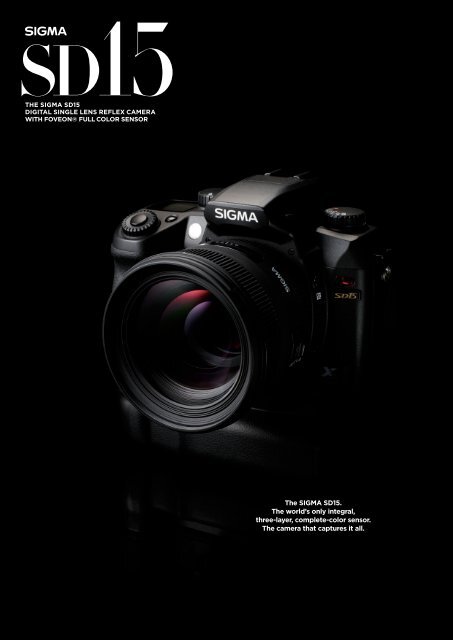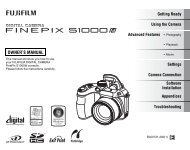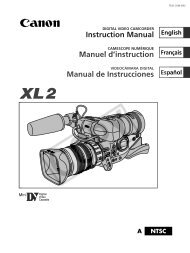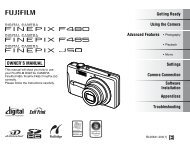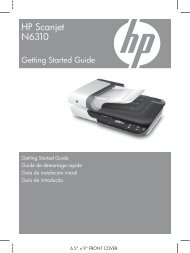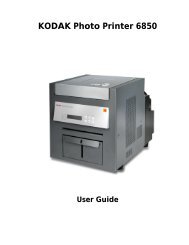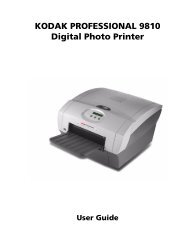Sigma SD15 Brochure - Sigma Imaging (UK)
Sigma SD15 Brochure - Sigma Imaging (UK)
Sigma SD15 Brochure - Sigma Imaging (UK)
Create successful ePaper yourself
Turn your PDF publications into a flip-book with our unique Google optimized e-Paper software.
The SIGMA <strong>SD15</strong>.<br />
The world’s only integral,<br />
three-layer, complete-color sensor.<br />
The camera that captures it all.
Camera : SIGMA <strong>SD15</strong> / File Type : X3F Raw, Exposure Mode : M - Manual Exposure, ISO Setting : 200, White Balance : Auto, Shutter Speed : 1/125s, Aperture Value : F2.5 | Lens : SIGMA 50mm F1.4 EX DG HSM 03
04<br />
Camera : SIGMA <strong>SD15</strong> / File Type : X3F Raw, Exposure Mode : A - Aperture Priority AE, ISO Setting : 50, White Balance : Auto, Shutter Speed : 0.4s, Aperture Value : F9.0 | Lens : SIGMA 18-50mm F2.8 EX DC MACRO
A new camera for a new era<br />
The photographer's everything<br />
— the camera.<br />
The photographer chooses the<br />
subject from many possibilities,<br />
capturing it in just the right light and<br />
shadow, at the perfect angle, and in<br />
the ideal frame. These elements come<br />
together for only an instant, so the<br />
photographer must work carefully but<br />
quickly.<br />
A camera gives permanent life to<br />
these fleeting instants, capturing not<br />
only the objective facts but also the<br />
meaning and subjective emotions<br />
associated with them. For nearly<br />
two centuries, photographers have<br />
worked to preserve the objective<br />
and subjective with greater accuracy<br />
and fidelity, and camera makers have<br />
crafted more and more sophisticated<br />
instruments with which to accomplish<br />
these objectives.<br />
Two elements of<br />
photographic expression<br />
In recent years, it's become more<br />
and more difficult to choose a digital<br />
camera from the many available<br />
options. But no matter how complex<br />
cameras become, the essence of<br />
photography remains the same:<br />
capturing the image as it exists in the<br />
photographer's imagination.<br />
The two parts of the camera essential<br />
to this task are the lens and the<br />
image sensor.<br />
In the era of film, photographers<br />
made fine adjustments to their<br />
cameras and played with the<br />
difference between films, aiming<br />
for different colors and levels of<br />
exposure and graininess as the<br />
mood suited them. In the digital era,<br />
however, although the consistency<br />
of cameras has increased, their<br />
individuality has tended to diminish,<br />
making the photographer's choice of<br />
instrument more difficult.<br />
The sensor and the lens make<br />
the photograph<br />
The image sensor is the key to<br />
taking a more individualistic digital<br />
photograph. To choose the best<br />
camera, a photographer must<br />
understand the differences between<br />
the image sensors available, selecting<br />
the one that offers the greatest<br />
precision and best image quality.<br />
Then, armed with the image sensor<br />
that matches his or her photographic<br />
vision, a photographer may select<br />
and deploy a variety of lenses that<br />
complement the sensor. The camera<br />
system that best empowers the<br />
dedicated photographer's ideal<br />
approach today is the <strong>Sigma</strong> digital<br />
single-lens reflex camera.<br />
05
06<br />
The single-lens reflex camera of choice<br />
The most complete system<br />
camera available<br />
To the photographer, exciting new<br />
subjects and compositions constantly<br />
appear—and drive the demand for a<br />
versatile camera that can grasp these<br />
opportunities. The most complete<br />
and flexible system camera available<br />
is the single-lens reflex (SLR) camera.<br />
Refined by photographers over many<br />
decades, SLR technology allows the<br />
photographer to create a genuinely<br />
personalized system that matches his<br />
or her own style—a benefit offered<br />
by no other type of camera. Wideangle,<br />
standard, telephoto, macro,<br />
high ratio zoom—all of these lenses<br />
and a wide range of accessories<br />
are available, accommodating any<br />
photographic circumstance.<br />
The photographer's vision<br />
makes the camera.<br />
Since the image the photographer<br />
has in mind is highly individual,<br />
<strong>Sigma</strong> believes a good camera<br />
should allow creativity to come to<br />
the fore, helping the photographer<br />
overcome limitations and expand the<br />
possibilities of the craft. No camera<br />
affords the photographer more<br />
freedom than a digital SLR.<br />
First comes the desire to create an<br />
image and capture meaning. Next<br />
come the proper tools—a digital<br />
SLR camera, lenses, and accessories<br />
suited to the photographer's unique<br />
vision. To take the perfect picture,<br />
the photographer needs to be able to<br />
move freely from instant to instant.<br />
More than any other system, a digital<br />
SLR camera helps the photographer<br />
be creative and take advantage of<br />
moments that only come once.<br />
The appeal of an optical viewfinder<br />
Another critical part of a digital<br />
SLR camera is the optical<br />
viewfinder. Based on advanced<br />
digital technology, the backlit LCD<br />
viewfinders with live preview<br />
and electronic viewfinders (EVF)<br />
found in compact digital cameras<br />
offer a high degree of scene<br />
visibility and convenience.<br />
An optical viewfinder offers many<br />
distinct advantages. Verification of<br />
every aspect of the scene with the<br />
naked eye. High-precision focusing.<br />
A real-time and realistic image<br />
of the subject. Finer detail. Finer<br />
photographs.<br />
An electronic image simply can't<br />
imitate these things, yet they are all<br />
crucial in taking highly precise,<br />
highly individual photographs.<br />
Currently, nothing matches an optical<br />
finder for revealing the subject exactly<br />
as it is and inspiring the photographer<br />
to take the ideal picture as conceived<br />
by that person.<br />
A camera that celebrates the<br />
photographer's style<br />
In the sleek, sophisticated body<br />
of a <strong>Sigma</strong> digital SLR is the finest<br />
image sensor available. It is coupled<br />
with a <strong>Sigma</strong> lens that offers<br />
crystal-clear images and the highest<br />
level of finished image quality.<br />
The optical viewfinder satisfies the<br />
professional eye and makes taking<br />
pictures truly a delight. In addition,<br />
a <strong>Sigma</strong> digital SLR camera<br />
coordinates well with accessories<br />
to enhance the enjoyment of every<br />
photographic opportunity.<br />
In short, a <strong>Sigma</strong> SLR camera<br />
is the complete system camera<br />
that empowers the photographer<br />
in the widest variety of creative<br />
circumstances. It allows the<br />
photographer not only to respond<br />
to the scene that presents itself but<br />
also to find and express a uniquely<br />
personal photographic method,<br />
style, and spirit.<br />
More than any other camera, the<br />
<strong>Sigma</strong> digital SLR camera has<br />
the individuality to support the<br />
creativity of the photographer<br />
and maximize his or her abilities.<br />
It is a resource that sharpens<br />
discernment, deepens the<br />
compositional sense, and<br />
strengthens the creative will,<br />
allowing the photographer to<br />
take artistic action.
Camera : SIGMA <strong>SD15</strong> / File Type : X3F Raw, Exposure Mode : A - Aperture Priority AE, ISO Setting : 50, White Balance : Auto, Shutter Speed : 0.4s, Aperture Value : F9.0 | Lens : SIGMA 18-50mm F2.8 EX DC MACRO 09
10<br />
The new standard for image quality and detail<br />
A sensor that enables<br />
true image quality<br />
The image sensor is the most<br />
important part of a digital SLR<br />
camera. What, then, should<br />
a photographer choosing a new<br />
camera look for in an image sensor?<br />
Most camera makers today<br />
emphasize megapixels, which are of<br />
course a factor in determining image<br />
resolution. <strong>Sigma</strong> believes, however,<br />
that a theory of image quality<br />
that begins and ends with the<br />
megapixels is grossly incomplete,<br />
since it is the structure of the image<br />
sensor that has the greatest impact<br />
on finished image quality.<br />
From the first generation onward,<br />
<strong>Sigma</strong> digital cameras have featured<br />
the Foveon X3® direct image<br />
sensor. This sensor leverages the<br />
special qualities of silicon, which<br />
is penetrated to different depths<br />
by different wavelengths of light.<br />
It was the world's first and remains<br />
the world's only image sensor to<br />
capture fully the three basic colors<br />
of light — red, green, and blue — in<br />
each pixel location without relying<br />
on color filters.<br />
In fact, the Foveon X3® direct image<br />
sensor receives red, green, and blue<br />
wavelengths of light vertically — just<br />
like modern color film. Considering<br />
it far superior to the much more<br />
common Bayer filter sensors<br />
available, most experts agree that<br />
the Foveon X3® direct image sensor<br />
has a unique structure that makes it<br />
the image sensor of the day — and<br />
of the future.<br />
Other digital cameras'<br />
monochrome image sensors<br />
With the exception of <strong>Sigma</strong>'s<br />
products, almost all digital<br />
cameras available today contain<br />
monochrome image sensors.<br />
Unable to distinguish between<br />
colors, these sensors receive light<br />
through a filter that has an even<br />
distribution of red, green, and blue<br />
filtering units. As a result,<br />
the sensor records color not<br />
vertically, but horizontally.<br />
Since each light-sensing photodiode<br />
has above it a tiny filter unit that<br />
lets in only one color, each pixel<br />
captures only one color, and data for<br />
the other two colors of light is never<br />
collected at all. A color interpolation<br />
process known as demosaicing<br />
guesses at the missing colors based<br />
on the colors of neighboring pixels,<br />
adding them back in.<br />
Developed and refined over an<br />
extended period, this method of<br />
processing images has matured,<br />
and the interpolation of colors<br />
is now fairly accurate. Inevitably,<br />
however, interpolating colors based<br />
on neighboring pixels results in the<br />
loss of subtle color details found in<br />
the original subject.<br />
Demosaicing compromises<br />
color detail.<br />
Due to the demosaicing process,<br />
conventional digital cameras using<br />
color filter arrays also generate<br />
color artefacts — colors not found<br />
in the original subject at all.<br />
The problem arises when areas<br />
of the subject have a higher<br />
frequency of color detail than can<br />
be adequately covered by the grid<br />
of red, green, and blue units<br />
in the Bayer filter.<br />
A conventional Bayer filter digital<br />
camera has an additional optical<br />
low-pass filter between the lens<br />
and the sensor. This filter acts on<br />
the high-resolution image from<br />
the imaging lens, eliminating highfrequency,<br />
detailed elements likely<br />
to generate color artefacts before<br />
they can reach the image sensor.<br />
Although it effectively suppresses<br />
color artefacts, the optical low-pass<br />
filter also systematically reduces the<br />
resolution of the image.<br />
The Foveon X3®<br />
direct image sensor generates<br />
truly emotional images.<br />
<strong>Sigma</strong> digital SLR cameras produce<br />
truly emotional images, thanks<br />
to the Foveon X3® direct image<br />
sensor. Completely different in<br />
structure from conventional image<br />
sensors, the Foveon X3® direct<br />
image sensor offers truly distinctive<br />
image quality characterized by fine<br />
detail—detail essential to capturing<br />
the emotional qualities of the<br />
subject. <strong>Sigma</strong> digital SLR cameras<br />
are designed to reproduce what the<br />
photographer shoots, right down<br />
to the feeling in the air—a result<br />
that is only possible with a vertical<br />
color-capture system that does not<br />
require color interpolation, and an<br />
image-processing system that does<br />
not require an optical low-pass filter.<br />
In contrast, a conventional image<br />
sensor performs guesswork on<br />
colors and even cuts out highfrequency<br />
areas completely.<br />
To a degree, colors can be adjusted<br />
in post-processing. But the subject's<br />
details and nuances, once lost, can<br />
never be recovered. To compensate,<br />
conventional cameras utilize<br />
sharpness processing to give the<br />
appearance of a higher resolution.<br />
As a result, these cameras produce<br />
images that have artificially sharp<br />
edges and give an uncanny and<br />
unnatural impression.
The Foveon X3® Direct Image Sensor<br />
The Bayer filter Image Sensor<br />
The Foveon X3® has three layers of<br />
R: 100%, G: 100%, B: 100% photosensors, enabling it to capture 100%<br />
of the RGB color data at once.<br />
R: 25%, G: 50%, B: 25%<br />
The old-fashioned Bayer filter image sensor<br />
can only capture 50% of the green color data,<br />
and a mere 25% each of the blue and the red.<br />
1 1
12<br />
Camera : SIGMA <strong>SD15</strong> / File Type : X3F Raw, Exposure Mode : M - Manual Exposure, ISO Setting : 50, White Balance : Auto, Shutter Speed : 1/125s, Aperture Value : F10 | Lens : SIGMA 50mm F1.4 EX DG HSM
Camera : SIGMA <strong>SD15</strong> / File Type : X3F Raw, Exposure Mode : M - Manual Exposure, ISO Setting : 100, White Balance : Auto, Shutter Speed : 1/125s, Aperture Value : F5.6 | Lens : SIGMA 18-50mm F2.8 EX DC MACRO 13
14<br />
Professor Carver Mead The First Three-layer Direct Image Sensor Professor Mead and Dick Lyon working with the prism camera<br />
The Inside Story<br />
The founding of FOVEON<br />
Foveon's invention of the X3® direct<br />
image sensor traces its roots back<br />
to the research of Caltech physicist,<br />
Professor Carver Mead. One focus of<br />
Mead's research was the modeling<br />
in semiconductors of human<br />
capabilities. Mead's collaboration<br />
with a neuroscience research group<br />
eventually led him and his students<br />
into fundamental investigations of the<br />
image sensing process.<br />
Mead's research led to a business<br />
venture supported by some of Silicon<br />
Valley's leading firms with both<br />
financial and human resources. In<br />
August 1997, Foveon was founded,<br />
taking its name from an anatomical<br />
term: fovea centralis.<br />
Maximal sensitivity to light and color<br />
The fovea centralis is the central<br />
portion of the human retina that has<br />
the most acute vision and the best<br />
color perception. The name “Foveon”<br />
signaled the company's commitment<br />
to developing the world's most<br />
advanced and high-performance<br />
image sensors for the professional<br />
market. From its first days as a<br />
startup company, Foveon gathered<br />
the best imaging engineering talent<br />
available and engaged in cuttingedge<br />
research and development.<br />
Foveon's first product was not an<br />
image sensor but instead a complete<br />
digital camera. In this original system,<br />
a beam-splitter prism assembly<br />
separated the incoming light into<br />
its three primary colors, passing the<br />
red, green, and blue beams through<br />
separate color filters and directing<br />
them to three large image sensors.<br />
An extremely high-resolution image<br />
was then assembled from the data of<br />
the three colors.<br />
This camera was extraordinary, highend<br />
technology, but it was expensive<br />
to manufacture and ultimately too<br />
costly for the end user. By the time<br />
Foveon stopped prism digital camera<br />
production, it had already created<br />
a patented technology that would<br />
ensure its preeminence in the coming<br />
era of image processing research.<br />
The invention of<br />
a revolutionary device<br />
Next, Dick Merrill, a leading<br />
semiconductor engineering working<br />
at Foveon, invented a device that<br />
could create a stack of RGB pixels<br />
in each pixel location. Thanks to<br />
his special genius and a unique<br />
career, Merrill had developed<br />
the creativity needed to realize<br />
artistic objectives through<br />
advanced technology. His ability<br />
as a photographer led to crucial<br />
technological contributions, and<br />
his passion for artistic expression<br />
became the driving force behind<br />
the invention and development<br />
of Foveon's advanced, full-color<br />
image sensors.<br />
A new era in image processing<br />
Merrill's device proved the<br />
feasibility of capturing RGB<br />
information in each pixel location,<br />
but it was not immediately possible<br />
to develop an image sensor based<br />
on this technology. Although it was<br />
well known that silicon absorbs<br />
shorter wavelengths of light<br />
closer to its surface and longer<br />
wavelengths of light further from<br />
its surface, additional advances in<br />
image processing were necessary<br />
to make use of this characteristic in<br />
creating high-quality images. That<br />
task fell to Foveon Chief Scientist<br />
Dick Lyon, an image processing<br />
expert with a keen interest in<br />
photography.
Dick Lyon Dick Merrill<br />
The <strong>Sigma</strong> SD9 and The Foveon X3® direct image sensor.<br />
New products offering<br />
ultra-high image quality<br />
Through careful experiments<br />
and analysis, Lyon performed<br />
theoretical research into the light<br />
absorption characteristics of silicon,<br />
determining a set of red, green, and<br />
blue spectral sensitivity curves for<br />
theoretical R, G, and B photodiodes<br />
at specific depths. Based on his<br />
research, Lyon concluded it was<br />
possible to use the technology to<br />
produce color images of a high<br />
quality that would satisfy the<br />
discerning professional.<br />
Through the efforts of Dick<br />
Merrill, Dick Lyon, and many other<br />
engineers, Foveon produced the<br />
prototype of the Foveon X3®<br />
direct image sensor and continued<br />
to refine it. At last in 2002,<br />
through trial and error, creativity,<br />
and powerful resolve, Foveon<br />
completed the development<br />
of an image sensor ready for a<br />
commercial digital camera.<br />
In October 2002, the <strong>Sigma</strong> SD9<br />
camera debuted, featuring the<br />
Foveon X3® direct image sensor. It<br />
was and is the world's first singlechip,<br />
full-color image sensor.<br />
The <strong>Sigma</strong> SD series arrives<br />
With its focus on creating lenses<br />
of the highest resolution possible,<br />
<strong>Sigma</strong> found the idea of using a<br />
resolution-reducing optical low-pass<br />
filter—on which conventional digital<br />
SLR cameras rely—completely<br />
unacceptable. A lens manufacturer<br />
with a philosophy of leveraging its<br />
own technology to offer the highest<br />
level of product quality, <strong>Sigma</strong><br />
introduced the SD9, its first digital<br />
SLR camera and the first camera in<br />
the world to feature the Foveon<br />
X3® direct image sensor.<br />
<strong>Sigma</strong> had accepted the risk of<br />
implementing a new technology<br />
and selected the Foveon X3® direct<br />
image sensor for its flagship digital<br />
SLR camera. Having no need for an<br />
optical low-pass filter, the Foveon<br />
X3® direct image sensor made<br />
full use of the potential of <strong>Sigma</strong>'s<br />
high-resolution lenses to produce<br />
lifelike images rich in emotion and<br />
presence.<br />
Best lens, best image sensor<br />
Having selected the Foveon<br />
X3® direct image sensor to bring<br />
out the full potential of its lenses,<br />
<strong>Sigma</strong> once again dedicated itself to<br />
taking the quality of its lenses to a<br />
new level. Aiming not just for a high<br />
modulation transfer function (MTF)<br />
value, <strong>Sigma</strong> took a holistic approach<br />
to lens developing, pursuing the<br />
best photographs and best finishedimage<br />
quality possible.<br />
In November 2008, <strong>Sigma</strong> purchased<br />
Foveon, creator of the Foveon<br />
X3® direct image sensor. With strong<br />
synergy in goals and philosophy,<br />
the two companies make an ideal<br />
combination. In addition, <strong>Sigma</strong> had<br />
always focused on developing its<br />
own technology and manufacturing<br />
its own products, including<br />
everything from tiny screws to<br />
injection molds. As a unified entity,<br />
<strong>Sigma</strong> and Foveon have continued to<br />
pursue the industry's highest level of<br />
quality while offering products at a<br />
reasonable cost.<br />
Having merged the best lens with<br />
the best image sensor, <strong>Sigma</strong> has not<br />
stopped asking the central question:<br />
what makes for the best overall<br />
photograph? <strong>Sigma</strong> has continued to<br />
pursue excellence in the body of the<br />
camera and all of the components<br />
to offer each photographer the best<br />
camera possible.<br />
15
The <strong>SD15</strong> offers<br />
refined and balanced<br />
performance<br />
An even more complete resource<br />
for the photographer<br />
A camera should convey the intention<br />
of the photographer accurately and<br />
directly. Developed with refinement<br />
in every detail, the <strong>SD15</strong> is a digital<br />
SLR camera that combines simplicity<br />
with a superior balance and a delicate<br />
calibrated harmony among its parts.<br />
In pursuit of the best camera and the<br />
finest photographs, <strong>Sigma</strong> designed<br />
the <strong>SD15</strong> to support the photographer<br />
in the widest range of circumstances<br />
possible and partner with the artist<br />
throughout a long and fruitful career.<br />
To this end, <strong>Sigma</strong> created the <strong>SD15</strong><br />
taking care to eliminate unnecessary<br />
complications of form or function.<br />
An elegant balance of functions<br />
The <strong>SD15</strong> offers an intuitive<br />
user interface that prepares the<br />
photographer for almost every<br />
conceivable environment. <strong>Sigma</strong>'s<br />
philosophy of the camera allows<br />
the photographer to concentrate<br />
on performance alone, as all the<br />
necessary functions are immediately<br />
present in ideal balance—a difference<br />
detected instantly with both the hand<br />
and the eye.<br />
17
18<br />
SIGMA <strong>SD15</strong> technology<br />
X3 Direct Image Sensor<br />
14 Megapixel Foveon X3<br />
direct image sensor<br />
The Foveon X3® direct image sensor<br />
captures all primary RGB colors<br />
at each and every pixel location.<br />
As the photo detectors are arranged in<br />
three layers, full and complete color is<br />
captured giving the images<br />
a three-dimensional feel.<br />
Focal Plane Shutter<br />
Durable focal plane shutter<br />
The durable focal plane shutter<br />
mechanism has a life cycle of over<br />
100,000 exposures and dramatically<br />
reduces the amount of dust and dirt<br />
from the shutter mechanism.<br />
The photographer can enjoy taking<br />
pictures without worrying about dust<br />
and dirt adhering to the image sensor<br />
either from inside or outside the camera.<br />
Two motor systems<br />
Prevention of camera shake<br />
The two motor systems are driven by<br />
the mirror-drive and shutter charge<br />
which lowers the vibration of the mirror<br />
movement, preventing camera shake.<br />
The mirror lock-up mechanism raises the<br />
mirror, preventing further vibration when<br />
the shutter is released. The prevention<br />
of camera shake is especially effective<br />
for macro photography and when using<br />
ultra-telephoto lenses.<br />
Improved buffer memory<br />
21 frames can be captured<br />
continuously in RAW mode<br />
The <strong>SD15</strong> is equipped with DDR II<br />
buffer memory which is twice as large<br />
in capacity as the SD14's buffer. The<br />
camera's high-speed image processing<br />
circuits are capable of handling the<br />
large data files generated by the highresolution<br />
14 megapixel sensor. The<br />
<strong>SD15</strong> features a continuous shooting<br />
speed of 3 frames per second with up<br />
to 21 RAW Images that can be captured<br />
in continuous shooting mode.<br />
TRUE II<br />
TRUE II image processing engine<br />
The <strong>SD15</strong> incorporates the TRUE (Threelayer<br />
Responsive Ultimate Engine) II" image<br />
processing engine which improves the<br />
processing speed and overall image<br />
quality. The unique image-processing<br />
algorithm provides high resolution<br />
power and reproduces high definition<br />
images with richly graduated tones.<br />
The improved processing speed of<br />
RAW and JPEG data provides ease<br />
of camera operation.<br />
SD card<br />
Unifying memory cards<br />
for added convenience<br />
The <strong>SD15</strong> adopts the SD card<br />
(compatible with SDHC) which is also<br />
used in the DP series of <strong>Sigma</strong> cameras<br />
improving convenience to users<br />
of both camera systems.<br />
AFE(Analog Front End)<br />
Improving performance<br />
at high sensitivity<br />
AFE (Analog Front End) converts the<br />
color data, which full-color capture<br />
systems record, to a digital signal. This<br />
enables the camera to reproduce high<br />
definition and richly colored images.<br />
ISO50 - 3200<br />
Providing noiseless image processing<br />
The <strong>SD15</strong> captures light effectively<br />
and ensures noiseless image processing.<br />
The image sensor provides high<br />
definition with rich, gradated tones.<br />
5-point AF<br />
Fast and precise focusing<br />
with 5-point AF<br />
The auto focus sensor features<br />
5 focusing points (center, left, right, up<br />
and down) ensuring consistently fast<br />
and precise focusing. The AF metering<br />
features a cross type sensor in the<br />
center of the screen. Selecting the<br />
AF point can be done manually or<br />
automatically.<br />
Improved Auto Bracketing function<br />
Five frame Auto Bracketing function<br />
In addition to the usual three<br />
frame bracketing, five frame<br />
bracketing has now been added to<br />
the Auto Bracketing function.<br />
It allows users to get a more detailed<br />
and accurate exposure.<br />
Wide coverage viewfinder<br />
Bright viewfinder image by<br />
the incorporation of a pentaprism<br />
The <strong>SD15</strong> features a pentaprism<br />
viewfinder with 98% (vertical<br />
and horizontal) coverage, 0.9x<br />
magnification and an 18mm eye<br />
point. A diopter adjustment is also<br />
equipped which can be adjusted<br />
from -3 to +1.5 dpt.<br />
Exposure compensation function<br />
More control of image exposure<br />
It is possible to adjust the camera's<br />
measured exposure value. When<br />
it is difficult to determine the<br />
exposure setting due to variable<br />
light conditions, it is possible to<br />
take a sequence of pictures of the
same subject at three or five different<br />
exposure levels. The shift value can be<br />
set in 1/3EV increments up to<br />
+-3EV(3 stops) / +-1.7EV(5 stops).<br />
New AE sensor<br />
77-Segment AE Sensor<br />
The <strong>SD15</strong> features a new 77-segment<br />
AE sensor which allows advanced<br />
AE algorithms, improving exposure<br />
accuracy. Exact control and<br />
collaboration with the AF point ensures<br />
the camera exposes accurately even in<br />
difficult lighting conditions.<br />
77-segment Evaluative Metering<br />
Evaluative Metering is suitable for general<br />
photography. Even under strong back<br />
lightning situations, the camera will give<br />
you the correct exposure.<br />
Center Weighted<br />
Average Metering<br />
The camera will measure<br />
the average luminance<br />
of the entire picture area<br />
with additional emphasis<br />
on the center area. This<br />
makes it ideal when using<br />
the optional exposure<br />
compensation.<br />
Center Area Metering<br />
The camera will measure<br />
the luminance of 8.8% of<br />
the entire picture area. It<br />
is ideal for metering when the subject is<br />
backlit.<br />
Spot Metering<br />
The camera will measure the luminance of<br />
1% of the entire picture area. This mode is<br />
suitable when you wish to set the exposure<br />
for a small portion of the scene and ignore<br />
the influence of the rest of the scene.<br />
Dust Protector<br />
Prevent dust from entering<br />
the camera body<br />
Most digital SLR cameras are vulnerable<br />
to dust entering the body. If the dust<br />
and dirt adhere to the image sensor, it<br />
may appear in the pictures. The mount<br />
of the SD 15 is equipped with a dust<br />
protector and<br />
the sealing<br />
parts are<br />
incorporated<br />
around<br />
the mount,<br />
preventing dust<br />
from entering<br />
the body.<br />
Even if dust adheres to the image<br />
sensor, the dust protector can be<br />
removed easily for sensor cleaning.<br />
New, intuitive user interface<br />
Simple user interface for<br />
faster camera operation<br />
The improved user interface provides<br />
faster and more convenient operation<br />
of the camera. The Quick Set button<br />
activates the display of the most<br />
commonly used camera functions such<br />
as Color Mode, White Balance, Image<br />
Quality and Image Size on one screen.<br />
The 4-Way Controller ensures faster<br />
operation of these features.<br />
The FUNC button enables functions<br />
such as Flash Mode and Synchro Mode.<br />
Large 3.0” TFT Color LCD Monitor<br />
Large, highly visible LCD screen<br />
The <strong>SD15</strong> camera features a 3.0 inch<br />
TFT color LCD monitor.<br />
This 460,000 pixel resolution LCD<br />
monitor benefits from a wide viewing<br />
angle, making it easy to check<br />
focusing and composition.<br />
OK Button setting<br />
Customize the OK button<br />
It is possible to allocate certain<br />
functions to the OK button for added<br />
convenience. These functions include<br />
Review Image, Rotate Image<br />
and Mark Image.<br />
Built-in flash with 17mm<br />
angle of coverage<br />
Advanced flash photography<br />
The <strong>Sigma</strong> <strong>SD15</strong> camera's built-in flash<br />
offers an angle of coverage of 17mm<br />
(equivalent to 28mm with<br />
a 35mm camera) lens with a guide<br />
number of 11. The Built-in flash can be<br />
synchronized to a shutter speed up<br />
to 1/180 sec. Incorporation of S-TTL<br />
automatic exposure system ensures the<br />
control of advanced flash photography.<br />
Backlit top LCD panel<br />
The top LCD panel displays<br />
important information<br />
The top LCD panel allows the<br />
photographer to quickly check camera<br />
information such as the resolution<br />
setting, metering mode, battery status<br />
and the number of images that can<br />
be recorded on the SD card. It also<br />
incorporates an orange backlight<br />
which enables the camera to be easily<br />
controlled in low light conditions.<br />
SIGMA Photo Pro 4.0<br />
Image adjustments with<br />
simple operation<br />
The supplied image processing software<br />
of SIGMA Photo Pro 4.0 converts RAW<br />
data quickly and easily. Incorporation<br />
of a new noise reduction algorithm<br />
reduces chroma and luminance noise. In<br />
addition, it is compatible with five Color<br />
Modes which apply a suitable setting to<br />
each shooting situation. The adjusted<br />
settings can be saved to the RAW file.<br />
Dedicated BP-21 Lithium-ion battery<br />
Dedicated rechargeable battery<br />
with a large capacity<br />
The dedicated BP-21 Lithium-ion<br />
battery is supplied as standard with<br />
the <strong>SD15</strong>. It is possible to shoot<br />
approximately 500 images on one full<br />
charge and takes about 120 minutes<br />
to fully charge with the supplied BC-21<br />
Battery Charger. The optional AC<br />
Adapter SAC-4 enables the <strong>Sigma</strong> <strong>SD15</strong><br />
to obtain power from the main supply.<br />
19
20<br />
Camera : SIGMA <strong>SD15</strong> / File Type : X3F Raw, Exposure Mode : A - Aperture Priority AE, ISO Setting : 50, White Balance : Auto, Shutter Speed : 1/6s, Aperture Value : F4.5 | Lens : SIGMA MACRO 70mm F2.8 EX DG
Highest-quality components for masterpiece photographs<br />
The TRUE II image-processing<br />
engine joins the SD series.<br />
The <strong>SD15</strong> is the first in the SD<br />
series to offer the TRUE (Threelayer<br />
Responsive Ultimate Engine) II<br />
image-processing engine. Developed<br />
exclusively to operate in synergy<br />
with the Foveon X3® direct image<br />
sensor, TRUE II has been an extremely<br />
popular feature since it was first<br />
introduced on the <strong>Sigma</strong> DP2.<br />
Based on <strong>Sigma</strong>'s comprehensive<br />
understanding of the image-creation<br />
mechanism of the Foveon X3®<br />
direct image sensor, TRUE II uses<br />
a proprietary algorithm to help create<br />
subtle and lifelike images. As a result,<br />
the <strong>SD15</strong> optimizes in-camera JPEG<br />
production, dramatically enhancing<br />
image quality and processing time.<br />
TRUE II leverages the high-quality<br />
light signal captured by the Foveon<br />
X3® direct image sensor, applying<br />
<strong>Sigma</strong>'s image-processing expertise<br />
to preserve the data under optimal<br />
conditions. It processes images<br />
quickly while maintaining their quality<br />
and emotional feel, helping to make<br />
the <strong>SD15</strong> even more rewarding to use.<br />
Featuring JPEG and<br />
RAW image format modes<br />
Using the JPEG setting allows<br />
the <strong>SD15</strong> to finish captured images<br />
as JPEG files inside the camera<br />
according to a specially developed<br />
<strong>Sigma</strong> formula.<br />
When these JPEG images match<br />
the photographer's vision, JPEG<br />
mode is an extremely powerful and<br />
convenient feature of the <strong>SD15</strong>.<br />
JPEG images are ready to print<br />
when the <strong>SD15</strong> is simply connected<br />
to the printer, and the image data<br />
files are ready to share with friends<br />
and family. For ease of connectivity<br />
and convenient sharing, JPEG mode<br />
is an excellent choice.<br />
Creating JPEG files in this way,<br />
however, subjects data to irreversible<br />
compression, leaving little scope for<br />
image correction afterward. Using<br />
a camera that offers only in-camera<br />
JPEG processing can severely limit<br />
a photographer's artistic expression.<br />
In RAW mode, the Foveon X3®<br />
direct image sensor outputs to .x3f<br />
RAW image format files, preserving<br />
the high-presence, high-quality,<br />
accurate, and balanced data that<br />
makes for truly emotional images<br />
and opens up new creative channels.<br />
<strong>Sigma</strong> believes that RAW mode<br />
allows photographers the clearest<br />
path to creative expression while<br />
supporting the best image quality<br />
and fostering the finest photographs.<br />
The .x3f RAW data format for<br />
highest-quality images<br />
<strong>Sigma</strong> believes that a digital SLR<br />
camera should empower the<br />
photographer in two distinct stages:<br />
during image creation and during<br />
image processing. Photographers<br />
should have all of the resources<br />
necessary to recreate the ideal<br />
image retained in the mind's eye.<br />
For this reason, the <strong>SD15</strong> offers<br />
photographers the highest-quality<br />
data that is ready for professional<br />
finishing, broad in dynamic range<br />
and rich in harmony and color.<br />
For use in RAW mode in all of its<br />
cameras, <strong>Sigma</strong> has developed the<br />
.x3f format to capture the pure,<br />
rich data that a true full-color sensor<br />
has to offer.<br />
Just as the best ingredients help<br />
create a gourmet dish, the finest<br />
data helps the photographer<br />
express individual skill and vision.<br />
RAW data in the .x3f format is what<br />
photographers require to do the very<br />
best work that only they can do.<br />
SIGMA Photo Pro 4.0 offers<br />
darkroom-style freedom and control<br />
Believing it to be the very best RAW<br />
data processing software available,<br />
<strong>Sigma</strong> offers SIGMA Photo Pro 4.0.<br />
With its intuitive and uncluttered<br />
interface, the application offers<br />
photographers exactly what they<br />
need to give their photographs<br />
a truly artistic and professional<br />
finish. Even those new to raw data<br />
processing will find it easy to use.<br />
The Adjustment Controls Palette<br />
contains exposure, contrast,<br />
shadows, highlights, color saturation,<br />
sharpness, and the X3 Fill Light<br />
feature. A new noise reduction<br />
control area allows for reduction of<br />
both color noise and luminance noise.<br />
The Color Wheel allows for easy<br />
adjustment of photograph colors.<br />
Using these controls, photographers<br />
can easily process images to match<br />
their original artistic vision — just<br />
as though working in a classic<br />
darkroom.<br />
SIGMA Photo Pro 4.0 is a perfect<br />
match to the .x3f format with its<br />
superior dynamic range. Its advanced<br />
tools enable artistic expression<br />
and the limitless enjoyment that<br />
photography has to offer.<br />
21
22<br />
The artist’s camera<br />
High-performance <strong>Sigma</strong> lenses.<br />
Founded in 1961 as a lens<br />
manufacturer, <strong>Sigma</strong> has leveraged<br />
its original technologies to create<br />
unique products and assume its<br />
position as a leading photographic<br />
equipment provider,<br />
despite a relatively late<br />
start in the marketplace.<br />
Today, <strong>Sigma</strong> continues<br />
to be a leader in the<br />
highly competitive<br />
interchangeable lens<br />
market, thanks to its<br />
dedication to ongoing<br />
development of innovative<br />
products and an unstinting<br />
approach to quality control.<br />
Today the standard for SLR<br />
cameras, the rear converter<br />
was originally a <strong>Sigma</strong><br />
invention. In the past, a<br />
conversion lens could<br />
only be used with a single<br />
objective lens. In addition,<br />
the conversion lens came<br />
between the objective<br />
lens and the body, making<br />
the camera front-heavy.<br />
<strong>Sigma</strong>'s innovation solved<br />
these issues, leading to the<br />
user-friendly lens system<br />
with which photographers<br />
are familiar today.<br />
A lens lineup designed for<br />
highest image quality.<br />
Leveraging advanced optical<br />
design and precision manufacturing<br />
expertise, <strong>Sigma</strong> has developed<br />
for its SA mount lenses a flare- and<br />
ghost-reducing super multi-layer<br />
coating, HSM (Hyper Sonic Motor),<br />
the OS (Optical Stabilizer) anti-shake<br />
compensation function,<br />
ELD (Extraordinary Low Dispersion)<br />
and SLD (Special Low Dispersion)<br />
glass, aspheric elements, and other<br />
cutting-edge components<br />
and features. All <strong>Sigma</strong><br />
standard, wide-angle,<br />
telephoto, macro, fisheye,<br />
and other lenses are<br />
designed to make best use<br />
of the exceptional image<br />
quality of the <strong>SD15</strong>.<br />
Seeking always to help<br />
photographers achieve<br />
the best results possible<br />
while enjoying the full<br />
delight of photography,<br />
<strong>Sigma</strong> currently produces<br />
more than 40 different<br />
types of lenses, as well<br />
as camera bodies that<br />
support lens function at the<br />
highest level.<br />
Developed and<br />
manufactured to meet the<br />
highest standards in the<br />
industry, <strong>Sigma</strong>'s SA Mount<br />
lenses offer photographers<br />
the selection and reliable,<br />
responsive performance<br />
that make true creativity<br />
possible.
OptiOnal accessOries<br />
There are many optional accessories available<br />
for the <strong>SD15</strong> to complement the user's style of<br />
photography. These accessories ensure ease of<br />
use and comfortable shooting.<br />
Power Grip<br />
PG-21<br />
This specially designed battery pack (PG-21)<br />
with a vertical grip is dedicated for <strong>SD15</strong> use<br />
and can hold two BP-21 batteries.<br />
Remote Controller<br />
RS-31<br />
The Remote control allows the<br />
photographer to take self-portraits<br />
or get into group shots. Used<br />
in conjunction with the Mirror<br />
Lock-Up function, it can reduce<br />
the possibility of image-blurring<br />
caused by camera shake, making<br />
it particularly useful for macro or<br />
telephoto shooting.<br />
Cable Release Switch<br />
CR-21<br />
The CR-21 Cable Release Switch<br />
is ideal for long exposures or bulb<br />
shooting. It is also possible to lock<br />
the release button.<br />
ELECTRONIC FLASH<br />
EF-530 DG ST<br />
This is a high-powered auto zoom flash<br />
featuring automatic flash metering<br />
using S-TTL operation. The flashgun<br />
allows perfect flash shots effortlessly<br />
and also includes an automatic zoom<br />
and bounce-head function.<br />
ELECTRONIC FLASH<br />
EF-530 DG SUPER<br />
The high power EF-530 DG<br />
Super flash enables S-TTL<br />
automatic flash metering. It has<br />
wireless flash connectivity and<br />
a high-speed synchronization<br />
function which can be used at<br />
high shutter speeds.<br />
AC Adapter<br />
SAC-4<br />
This is used to provide<br />
a constant electricity<br />
supply when shooting<br />
in the studio, or taking<br />
pictures indoors. It is<br />
also recommended for<br />
use when connecting the<br />
camera to your computer<br />
to transfer data.<br />
23
SIGMA <strong>SD15</strong> | DIGITAL SINGLE LENS REFLEX CAMERA | PRINCIPAL SPECIFICATIONS<br />
FORMAT<br />
Format<br />
Compatible Lenses<br />
Lens Mount<br />
Angle of View<br />
IMAGE SENSOR<br />
Format<br />
Image Sensor Size<br />
Number of Pixels<br />
Aspect Ratio<br />
RECORDING SYSTEM<br />
Storage Media<br />
Still Image Format<br />
Recording Mode<br />
Color Mode<br />
AUTO FOCUS<br />
Auto Focus Type<br />
AF Point<br />
AF Operating Range<br />
Focus Mode<br />
AF Point Selection<br />
Active AF point indicator<br />
AF Assist Light<br />
Focus Lock<br />
SHUTTER<br />
Shutter Type<br />
Shutter Speed<br />
External Flash Sync.<br />
Electronically Controlled Focal Plane Shutter<br />
1/4000 – 30 sec., Bulb<br />
(up to 30 sec. With Extended Mode: 2 min.)<br />
X-Sync (1/180)<br />
www.SIGMA-SD.com/<strong>SD15</strong><br />
Foveon X3® direct image sensor CMOS<br />
20.7 x 13.8mm (0.8in. x 0.5in.)<br />
Total Pixel 14.45 MP (2,688 x 1,792 x 3 layers)<br />
Effective Pixel 14.06 MP (2,652 x 1,768 x 3 layers)<br />
3 : 2<br />
SD Card/Compatible with SDHC, Multi Media Card<br />
Exif 2.21, DCF 2.0, DPOF<br />
Lossless compression RAW data(12-bit),<br />
JPEG (High, Medium, Low)<br />
7 types (Standard, Vivid, Neutral, Portrait, Landscape,<br />
B&W, Sepia)<br />
File Size RAW High Approx. 15.4 MB 2,640 x 1,760<br />
JPEG High : Fine Approx. 3.3 MB 2,640 x 1,760<br />
: Normal Approx. 1.9 MB 2,640 x 1,760<br />
: Basic Approx. 1.4 MB 2,640 x 1,760<br />
Medium : Fine Approx. 1.6 MB 1,872 x 1,248<br />
: Normal Approx. 0.9 MB 1,872 x 1,248<br />
: Basic Approx. 0.7 MB 1,872 x 1,248<br />
Low : Fine Approx. 0.8 MB 1, 312 x 880<br />
: Normal Approx. 0.5 MB 1, 312 x 880<br />
: Basic Approx. 0.3 MB 1, 312 x 880<br />
WHITE BALANCE<br />
Settings 8 types (Auto, Daylight, Shade, Overcast, Incandescent,<br />
Fluorescent, Flash and Custom)<br />
VIEWFINDER<br />
Type<br />
Viewfinder Frame Coverage<br />
Viewfinder Magnification<br />
Eye point<br />
Diopter Adjustment Range<br />
Focusing Screen<br />
Mirror<br />
Depth of Field Preview<br />
FLASH<br />
Type<br />
Built-in Flash Guide No.<br />
Built-in Flash Coverage<br />
Flash Metering System<br />
Flash Compensation<br />
Compatible Flashguns<br />
Sync Terminal<br />
Connectivity<br />
Interchangeable lens SLR camera<br />
SIGMA SA mount interchangeable lenses<br />
SIGMA SA bayonet mount<br />
Equivalent to approx. 1.7 times the focal length of the<br />
lens (for 35mm cameras)<br />
Pentaprism SLR viewfinder<br />
98% vertical, 98% horizontal<br />
0.9x (50mmF1.4 - oo )<br />
18mm<br />
-3dpt ~ +1.5dpt<br />
Fixed, all matt screen<br />
Quick return<br />
Depth of field preview button<br />
TTL phase difference detection system<br />
5-points (center AF point:cross type)<br />
EV 0 to +18 (ISO100)<br />
Single AF, Continuous AF (with AF motion prediction<br />
function), Manual<br />
Automatic Selection, Manual Selection<br />
Superimposed in viewfinder<br />
White Color AF Assist Light<br />
Shutter Release Halfway-Down position<br />
Manual Pop-up Built-in flash<br />
GN11<br />
17mm lens angle covered<br />
S-TTL Auto Flash<br />
+ - 3EV (1/3 stop increments)<br />
EF-530DG SUPER, EF-530DG ST, EM-140 DG<br />
Available<br />
Hot shoe (contact X synchronization at 1/180 sec. or<br />
less, with dedicated flash linking contact)<br />
EXPOSURE CONTROL<br />
Metering Systems<br />
77 segment Evaluative Metering, Spot Metering,<br />
Center Area Metering, Center-Weighted Average<br />
Metering<br />
Metering Range<br />
EV 1 to 20 (50mm F1.4 : ISO100)<br />
Exposure Control System [P] Program AE (Program Shift is possible),<br />
[S] Shutter Speed Priority AE,<br />
[A] Aperture Priority AE, [M] Manual<br />
ISO Sensitivity<br />
AUTO(ISO 100-200) : With Flash (ISO 100-400)<br />
Equivalent to ISO100, 200, 400, 800 and 1600<br />
(ISO50 and ISO3200 with Extended Mode)<br />
Exposure Compensation + - 3 EV (in 1/3 Stop Increments)<br />
AE Lock<br />
AE lock button is pressed or shutter release button<br />
is pressed halfway<br />
Auto Bracketing<br />
With 3 frames bracketing : 1/3EV Stops Up to + - 3EV<br />
With 5 frames bracketing : 1/3EV Stops Up to + - 1.7EV<br />
DRIVE SYSTEM<br />
Drive Modes<br />
Continuous shooting speed<br />
Continuous buffer<br />
LCD MONITOR<br />
Type<br />
Monitor Size<br />
LCD Pixels<br />
Coverage<br />
MENU<br />
LCD Monitor Language English / Japanese / German / French / Spanish /<br />
Italian / Chinese (Simplified) / Korean / Russian<br />
INTERFACE<br />
PC/IF<br />
AUDIO/VIDEO<br />
DIMENSIONS AND WEIGHT<br />
Dimensions<br />
Weight<br />
[1] Single, [2] Continuous,<br />
[3] Self-Timer (2sec./10sec.), [4] Mirror Lock-up<br />
3 frames/second<br />
21 frames<br />
DISPLAY<br />
Top LCD Shutter speed display, Aperture value display,<br />
Exposure meter display, Shooting capacity display,<br />
Exposure mode display, Battery status display,<br />
Remote controller mode display,<br />
Exposure compensation value display<br />
PLAYBACk<br />
Reviewing Images<br />
Highlight Display<br />
Histogram<br />
TFT color LCD monitor<br />
3.0"<br />
Approx. 460,000<br />
100%<br />
USB(USB2.0)<br />
Video Out (NTSC/PAL)<br />
POWER SOURCE<br />
Power Li-ion Battery Pack BP-21, Batterry Chager BC-21,<br />
AC Adapter SAC-4 (Optional)<br />
OPERATING ENVIRONMENT<br />
Operating Temperature<br />
Operating Hunidity Range<br />
Single frame display, Multi display [9 frames],<br />
Zoom, Slide Show<br />
Available<br />
Available<br />
144mm/5.7"(W) X 107.3mm/4.2"(H) X 80.5mm/3.2"(D)<br />
680g / 24oz (without battery and card)<br />
0 - +40<br />
85% or lower<br />
ACCESSORIES<br />
• Li-ion Battery BP-21, • Battery Charger BC-21, • USB Cable, • Video Cable,<br />
• Neck Strap • Eye Cap, • Body Cap, • Eyepiece Cap,<br />
• SIGMA Photo Pro Disc, • <strong>SD15</strong> Instruction Manual<br />
OPTIONAL ACCESSORIES<br />
• Battery Grip : Power Grip PG-21, • AC Adapter : SAC-4,<br />
• Remote Controller : RS-31, • Cable Release Switch : CR-21,<br />
• Electronic Flash : EF-530 DG SUPER, EF-530 DG ST, EM-140 DG<br />
The appearance and specifications are subject to change without notice.<br />
SIGMA CORPORATION 2-4-16, Kuriki, Asao-ku, Kawasaki-shi, Kanagawa, 215-8530 Japan Tel: +81-44-989-7437 Fax: +81-44-989-7448 www.sigma-photo.co.jp<br />
Notice: To avoid damage or injury, please read the instruction manual carefully before using the camera. Copyright© 2010 <strong>Sigma</strong> Corporation All Rights Reserved.


